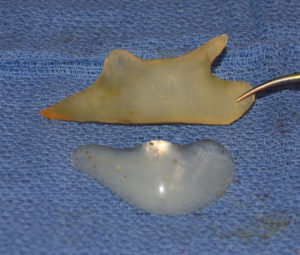Cheek implants are one of the three most commonly performed facial implant procedures. It differs from the other two (nose and chin) for a variety of reasons. First and foremost it is a bilateral procedure that requires two implants unlike a nose or a chin. It is also not a true profile structure without a defined edge in space. Lastly is a more complex curved structure that flows into other surrounding structures like the eye, upper jaw and temples of the skull.
When looking at the size of the cheek region all current cheek implant shapes seems less anatomic than that of the the underlying bony anatomy. The cheek bone is known as the ZMC complex. (zygomatico-maxillary complex) and is well known to be shaped like a tripod based on its extensions into the surrounding facial structures. (technically a quadripod if you include the lateral orbital extension) But its influence on the face comes from the bony prominence and its three external legs.

Such an anatomic cheek implant shape would also be very helpful in helping to lower the risk of the most common cheek implant complication….asymmetry. It ‘legs’, particularly the maxllary extension, would provide a visual clue about the implant’s orientation on the cheek bone.
Dr. Barry Eppley
Indianapolis, Indiana


